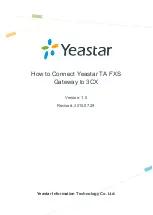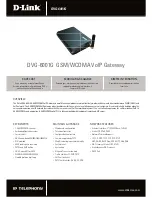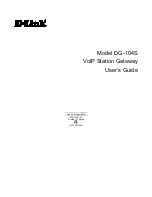
5
Routing
89
•
Route
#3
All
packets
going
to
hosts
on
the
195.66.77.0/24
network
will
be
sent
out
on
the
wan
interface.
No
gateway
is
required
to
reach
this
network.
•
Route
#4
All
packets
going
to
any
host
(the
all
‐
nets
‐
ip4
network
will
match
all
hosts)
will
be
sent
out
on
the
wan
interface
and
to
the
gateway
with
IPv4
address
195.66.77.4
.
That
gateway
will
then
consult
its
routing
table
to
find
out
where
to
send
the
packets
next.
A
route
with
the
destination
all
‐
nets
‐
ip4
is
often
referred
to
as
the
Default
Route
as
it
will
match
all
packets
for
which
no
specific
route
has
been
configured.
This
route
usually
specifies
the
interface
that
is
connected
to
the
public
internet
via
an
ISP.
Narrowest routing TableMatch is selected
When
a
routing
table
is
evaluated,
the
ordering
of
the
routes
is
not
important.
Instead,
all
routes
in
the
relevant
routing
table
are
evaluated
and
the
most
specific
route
is
used.
In
other
words,
if
two
routes
have
destination
networks
that
overlap,
the
narrower
network
definition
will
be
taken
before
the
wider
one.
This
behavior
is
in
contrast
to
IP
rules
where
the
first
matching
rule
is
used.
In
the
above
example,
a
packet
with
a
destination
IPv4
address
192.168.0.4
will
theoretically
match
both
the
first
route
and
the
last
one.
However,
the
first
route
entry
is
a
narrower,
more
specific
match
so
the
evaluation
will
end
there
and
the
packet
will
be
routed
according
to
that
entry.
Although
routing
table
ordering
is
not
important,
it
is
still
recommended
for
troubleshooting
purposes
to
try
and
place
narrower
routes
first
and
the
default
route
last.
Local IP Address property
The
correct
usage
of
the
Local
IP
Address
property
can
be
complex,
so
additional
explanation
is
provided
next.
Normally,
a
physical
interface
such
as
sfp1
is
connected
to
a
single
network
and
the
interface
and
network
are
on
the
same
network.
In
that
case,
the
network
is
bound
to
a
physical
interface
and
clients
on
the
connected
network
can
automatically
find
the
SEG
through
ARP
queries.
ARP
works
because
the
clients
and
the
SEG
interface
are
part
of
the
same
network.
A
second
network
might
then
be
added
to
the
same
physical
interface
via
a
switch,
but
with
a
new
network
range
that
doesn't
include
the
physical
interface's
IP
address.
In
that
case,
this
network
is
not
bound
to
the
physical
interface.
Clients
on
this
second
network
will
not
be
able
to
communicate
with
the
SEG
because
ARP
will
not
function
between
the
clients
and
the
interface.
To
solve
this
problem,
a
new
route
is
added
with
the
following
properties:
•
Interface:
The
interface
on
which
the
second
network
is
found.
•
Network:
The
IP
address
range
of
the
second
network.
•
Local
IP
Address:
An
address
within
the
second
network's
IP
range.
















































